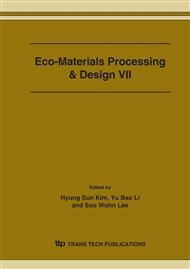p.842
p.846
p.850
p.854
p.858
p.862
p.866
p.870
p.874
Low Elastic Modulus β Ti-Nb-Si Alloys for Biomedical Applications
Abstract:
We report on advanced β-titanium alloys having excellent biocompatibility without containing V or Al that has been known as a toxic element for human body, and on a low elastic modulus to be used in the fields of artificial joint and dental implant in the replacement of natural human bone. Martensite structure with α’ (hcp) or α”(orthorhombic) was observed in Ti-xNb-1.5at.%Si, where x=10-20at.%. The crystal structure of martensite formed from water quenching process was largely dependent upon Nb content but does not on Si content. On the basis of experimental results obtained, it is suggested that Si has an effective role to suppress the precipitation of ω phase leading to reduction in elastic modulus in the metastable β phase region. Metastable β phase region was superior to reduce the elastic modulus than stable β phase region in the present alloy system. The minimum value of elastic modulus was measured to 48GPa.
Info:
Periodical:
Pages:
858-861
Citation:
Online since:
March 2006
Authors:
Keywords:
Price:
Сopyright:
© 2006 Trans Tech Publications Ltd. All Rights Reserved
Share:
Citation:


